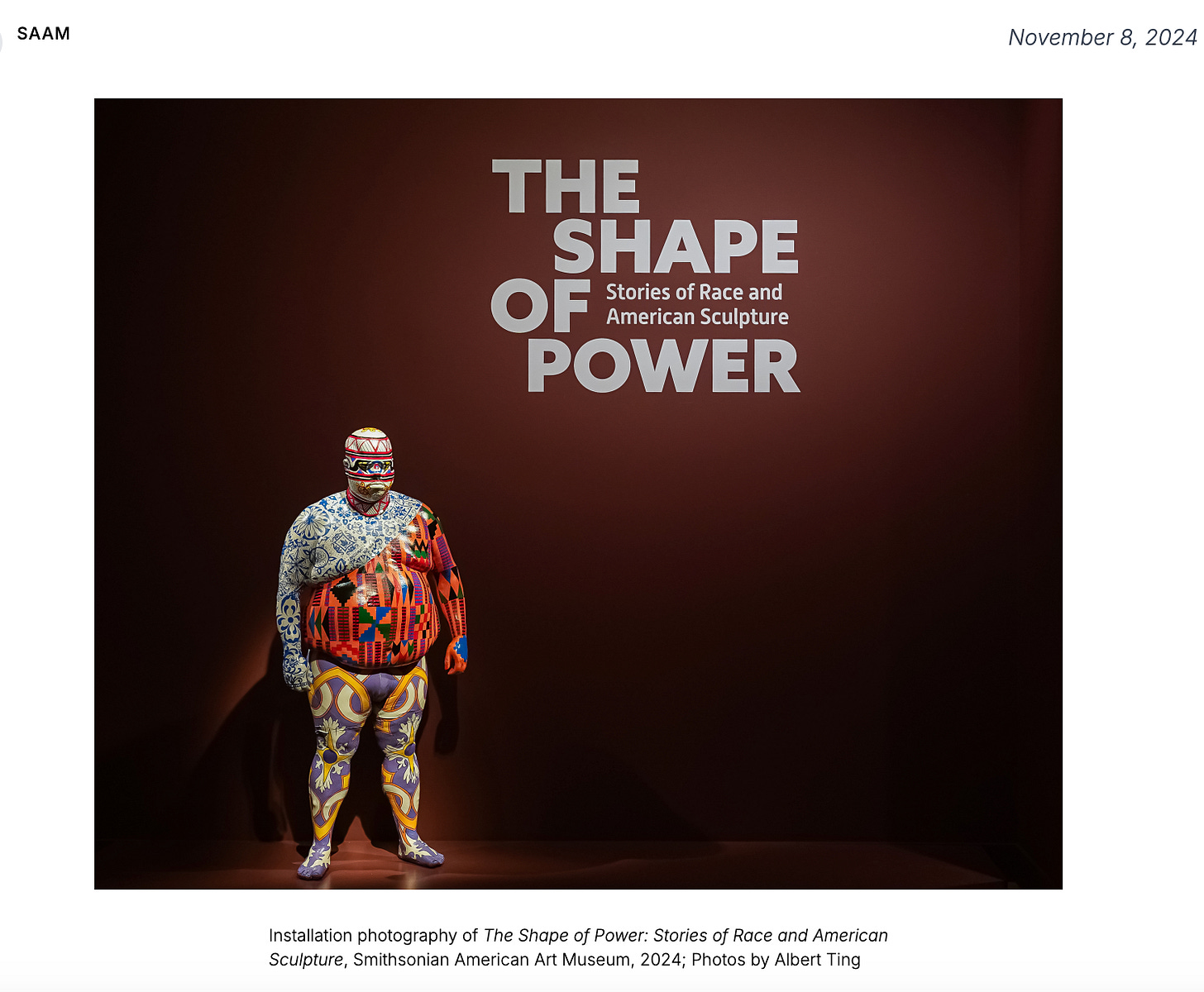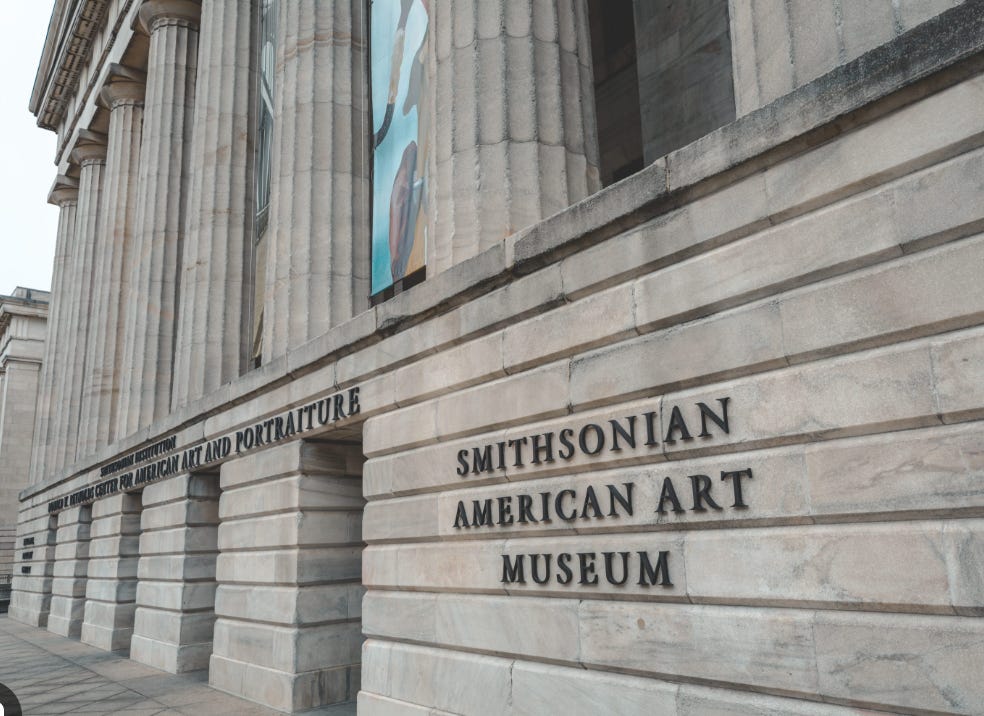World War Hair at the Smithsonian
Race does not exist biologically, except, of course, when it comes to the world's most important topic: women's hair.
As I pointed out in the post below, the Trump White House has released an executive order entitled “RESTORING TRUTH AND SANITY TO AMERICAN HISTORY” featuring complaints about shows put on at the Smithsonian Institution:
Once widely respected as a symbol of American excellence and a global icon of cultural achievement, the Smithsonian Institution has, in recent years, come under the influence of a divisive, race-centered ideology. This shift has promoted narratives that portray American and Western values as inherently harmful and oppressive. For example, the Smithsonian American Art Museum today features “The Shape of Power: Stories of Race and American Sculpture,” an exhibit representing that “[s]ocieties including the United States have used race to establish and maintain systems of power, privilege, and disenfranchisement.” The exhibit further claims that “sculpture has been a powerful tool in promoting scientific racism” and promotes the view that race is not a biological reality but a social construct, stating “Race is a human invention.”
In response, this led to tut-tutting that everybody who has been to college now knows that race does not exist biologically.
The one exception to the unreality of biological race, of course, is, according to numerous women intellectuals, women’s hair. Women’s hair is absolutely biological, apparently, and, hence, all existing culture must be overturned to value some races’ hair more highly than at present. Or something.
Hence, upcoming at the Smithsonian American Art Museum is yet another battlefield in World War Hair:
The Shape of Power Conversation with Monument Lab: Hair Stories
Thursday, April 10, 2025, 5:30 – 7pm EDT
SOLD OUT
SAAM has partnered with Monument Lab, a nonprofit public art, history, and design studio based in Philadelphia, for an engaging series of guided conversations about The Shape of Power exhibition. In each of the three events, Monument Lab curators Yolanda Wisher and Aubree Penney will focus on specific artworks to illustrate ideas and spark dialogue. This program will unravel the intersections of race, culture, and identity as reflected in the power of hair to shape our perceptions of style, beauty, and resistance.
Yolanda Wisher is a black poetess who sings and recites her poetry (which “focuses on the experience of being African-American”) in front of a jazz band called Yolanda Wisher and the Afroeaters. It’s not the worst stuff I ever heard, but it appears they aren’t quite good enough to make it in the highly competitive music business, so instead they play the big endowment art museum circuit, like the clip above recorded at Philadelphia’s Barnes Foundation. The high culture world is very much a who-you-know business, so it’s for people who like networking and writing grant proposals more than making music.
But, in general, Ms. Wisher seems less obnoxious than Ms. Penney.
From AubreePenney.com:
Aubree Penney (b. 1990, US) is a fat, disabled Memphis-raised, Dallas-based curator, artist, writer, and project manager.
Her work addresses power dynamics in art display, confronting the impossibility of neutrality or equity in institutional structures.
Her curatorial practice is grounded in the disruption of museums’ prioritization of well and able bodies through both architectural and digital structure and installation strategy. Her ongoing research focuses on language translation and standardization policies in museum database structure and wall labels. She is interested in the ties between colonial tendencies and mimetic expectations in form and content relationships, prioritizing the impact on Black American and African contemporary artists. She advocates for artists’ leadership in the determination of tombstone label contents and production of accessibility materials for their own works.
Her art practice confronts collective knowledge production’s ability to normalize the horrors of history through standardized visual formats while simultaneously elevating the obscure.
She holds an MFA with a distinction in Curating from Goldsmiths College, University of London and a BA from Haverford College in English and Religion.
Here’s an exhibit mentioning her:
An Alarming Specificity engages with human bodies which do not align with a fictional norm grounded in white patriarchal hegemony. Curated by Aubree Penney, the exhibition examines ways artists subvert the predominance of white, heterosexual, cis-male, non-disabled bodies as the default of humanity.
Across installation, mixed media, prints, gifs, and performance, artists Shannon Finnegan, Chitra Ganesh, Yvette Granata, Lynn Hershman Leeson, Linda Stupart, and Eva Wŏ uphold individual bodies attempting to survive and thrive in a world which frequently neglects to support, protect, recognize, or heal them. This centering of bodies of women, people of color, atypically embodied people, and members of the LGBTQIA+ community extends into mechanisms of display.
I presume she’s white or she would have listed her Pokemon points for being nonwhite. Being white, she appears feel the career-need to be more hate-filled toward whites than the black lady does.









> "bodies attempting to survive and thrive in a world which frequently neglects to support, protect, recognize, or heal them."
She recognizes she has a fat body, but she is doing nothing to heal it.
It's hard to help ("support") people who don't want to be helped.
Just happened to visit the Smithsonian’s AAM two weeks ago. Been there lots of times over the years. Noticed that a lot of the great art that I was used to seeing there had been replaced; also noticed that a lot of the little art-related narrative plaques had become less factual and more opinionated. Heard about this, but had never encountered it. It’s disturbing, and insidious.